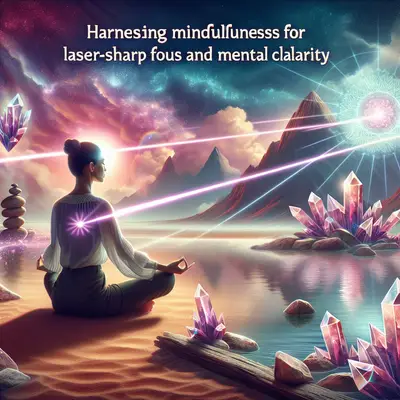Breathing Exercises
Breathing exercises are the cornerstone of many mindfulness practices. By focusing on the simple act of inhaling and exhaling, we can anchor ourselves in the present moment. Deep, slow, and rhythmic breathing can help calm the mind, reduce stress, and enhance mental clarity. This simple technique can be used at any time, whether you're at work, at home, or even in the midst of a stressful situation.
Body Scan Meditation
Body scan meditation involves paying detailed attention to different parts of the body, from the tips of your toes to the top of your head. This practice can help you develop a keen awareness of bodily sensations, relax tense muscles, and clear your mind of distractions. By focusing on your body, you're less likely to get caught up in unhelpful thoughts that can cloud your focus and judgment.
Mindful Eating
Mindful eating involves paying full attention to the experience of eating and drinking, both inside and outside the body. This means noticing colors, smells, textures, flavors, temperatures, and even the sounds when we chew and swallow. This practice can enhance your enjoyment of food, improve digestion, and help you develop a healthier relationship with food.
Walking Meditation
Walking meditation is a form of meditation in action. In this practice, you use the experience of walking as your focus. You become aware of each step, the feeling of your feet touching the ground, the rhythm of your breath while moving, and the feeling of wind against your skin. Walking meditation can be a powerful way to connect with your environment while maintaining a state of mindfulness.
Mindful Listening
Mindful listening involves fully focusing on what is being said, rather than just passively 'hearing' the message. This can help you to avoid misunderstandings, conflicts, and missed information – all of which can distract you and take you away from the present moment. Mindful listening can help you stay focused, understand better, and respond more effectively.
Conclusion
Mindfulness is a powerful tool for enhancing mental clarity and focus. By practicing the techniques outlined above, you can learn to stay present, reduce stress, and improve your mental acuity. Remember, mindfulness is not about achieving a certain state or goal. Rather, it's about being fully engaged in the richness of the present moment. Cultivate your mindfulness practice with gentleness and patience, and watch your focus and clarity flourish.



